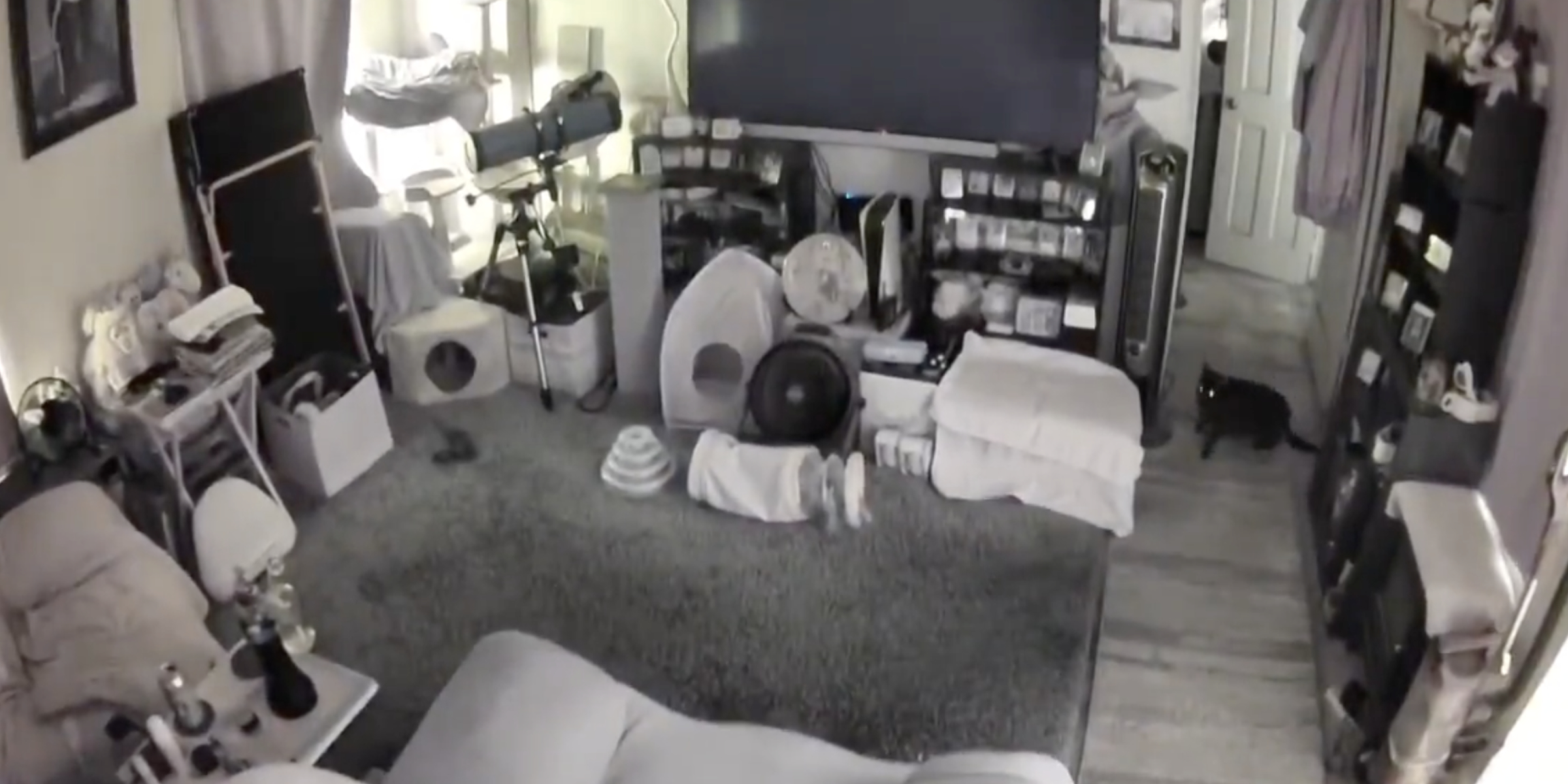
Earthquake and Aftershocks Hit Same Area in San Diego County — Details
Three earthquakes struck Southern California, jolting residents and prompting swift responses from state authorities, utilities, and first responders.
A cluster of earthquakes struck near Julian, California, on Monday, April 14. According to the United States Geological Survey (USGS), the first and strongest quake, a
magnitude 5.2 event
, occurred at 10:08 a.m. local time (17:08 UTC), centered 5 kilometers south of Julian at a depth of 14.3 kilometers.
Roughly an hour later, at 11:23 a.m. (18:23 UTC), a second quake measuring
magnitude 4.0 struck
4 kilometers south-southeast of Julian, with a depth of 12.6 kilometers.
The third quake, measuring
magnitude 2.9
, followed at 1:23 p.m. (20:23 UTC). It was located 4 kilometers south of Julian at a depth of 12.7 kilometers.
According to CBS 8 San Diego, these events occurred less than 24 hours after a
magnitude 3.5 earthquake
hit the same area. Residents described how the quakes affected their surroundings and how they responded.
One unnamed resident
recalled
the experience, “The whole building started shaking. The parking lot literally felt like a wave under my feet. It was crazy.”

A Julian resident shares his reaction to the series of earthquakes | Source: YouTube/cbs8sandiego
Another resident, Ashley Carter, was working from home when the tremor hit. “It just started going and it was getting worse, and then I got up and ran after the dog and we headed outside,” she
shared
.

Ashley Carter recalls rushing outside with her dog as the shaking grew stronger | Source: YouTube/cbs8sandiego
At a local liquor store, manager Dylan Carnero recalled his first instinct once the shaking began. “Once I stopped hearing the bottles popping and everything. My first thought was just to get outside and onto the street and away from the buildings,” he
said
.

Dylan Carnero stands inside his workplace after bottles fell during the quake | Source: YouTube/cbs8sandiego
In response to the earthquakes, Governor Gavin Newsom’s office shared on X that he had been informed about the situation in San Diego County. The state is
working with local officials
to check for any damage and decide if help is needed.
San Diego Gas & Electric (SDG&E) responded quickly by activating its
Emergency Operations Center
to check for damage. In a post on X, the company said crews began inspecting equipment near the epicenter and worked outward, moving as quickly as safety allowed.
The utility company also reminded residents to report gas leaks or downed power lines by calling 1-800-411-SDGE (7343) or 911 and warned the public to stay away from damaged electrical equipment.
According to a spokesperson for the San Diego Fire-Rescue Department, there was
no damage or injuries
despite the strength of the initial quake.
While San Diego avoided serious damage, other parts of the country have not been as fortunate,
as extreme weather events continue to strike multiple regions
.
A deadly tornado outbreak that began on the evening of March 14 devastated parts of the South and Midwest, leaving at least 18 people dead. The storms intensified the following day, causing widespread destruction in Mississippi and Louisiana and triggering a rare Tornado Emergency in Taylorsville, Mississippi.
Days before the event, the Storm Prediction Center (SPC) issued its
highest threat level
, warning of possible EF4 or stronger tornadoes. The first twisters touched down in Arkansas and Missouri before the
severe weather
moved southward.
On Saturday alone, the SPC recorded over a dozen
tornado reports
, with Mississippi and Alabama bearing the brunt. Mississippi’s Walthall County saw at least two powerful tornadoes within 45 minutes.
In Tylertown, three
deaths have been confirmed
, though officials caution that the toll may rise as rescue teams continue searching through the debris. Initial surveys by the National Weather Service indicate some of the strongest tornadoes reached EF3 strength, with winds up to 165 mph.
Ongoing damage assessments could reveal even stronger tornadoes. As of Saturday afternoon, more than 50,000 customers across Louisiana, Mississippi, and Alabama were without power. The
severe weather threat
is expected to continue into Sunday, affecting nearly 70 million people from the Northeast to Florida.
An
earthquake
struck Mississippi, which added to the devastation as the state was still reeling from the powerful tornado outbreak. The seismic event further complicated rescue and recovery efforts, with officials working to assess the full extent of the damage caused by both natural disasters.
However, the
severity of destruction
depends on multiple factors beyond just the earthquake’s magnitude. Variables such as proximity to the epicenter, soil composition, and structural integrity of buildings all play crucial roles.
Generally, significant damage is not expected unless an earthquake registers above a magnitude of 4 or 5, but local conditions can amplify its impact. Authorities are continuing assessments to determine the full extent of the situation.
The earthquake came amid a string of severe weather events across the country.
Four earthquakes struck near Hayward, California, on February 13, according to the USGS.
The quakes, ranging from magnitude 2.7 to 3.6, occurred within a small area 2 kilometers east of Hayward at depths between 3.3 and 3.9 miles. The first earthquake of the day, a
magnitude 2.7
, occurred at 13:03 UTC (5:03 a.m. PST).
Two more quakes struck just two minutes apart, a
3.3 magnitude
at 19:52 UTC (11:52 a.m. PST) and a
3.2 magnitude
at 19:54 UTC (11:54 a.m. PST). Meanwhile, the USGS reported that the strongest quake, a
magnitude 3.6
, was recorded at 21:59 UTC (1:59 p.m. PST) at a depth of 3.6 miles.
All four quakes were centered close to each other, with coordinates ranging from
37.645°N
to
37.648°N
latitude and
122.052°W
to
122.059°W
longitude. While the earthquakes appeared minor, their location was a stark reminder of the region’s seismic vulnerability.
According to the USGS, Hayward sits on the
Hayward Fault
, a right-lateral, strike-slip fault that runs from San Pablo Bay to Fremont, passing through Berkeley and Oakland.
It moves gradually, creeping at about 5 millimeters (1/5 inch) per year, but some of this movement is uneven. Roughly 4 millimeters (1/6 inch) per year gets stuck, building up stress that eventually releases in earthquakes.
Studies estimate the fault’s total movement at 9 millimeters (1/3 inch) per year, combining steady creep with sudden shifts. South of Fremont, it branches into a network of surface faults that connects to the
Calaveras Fault
. At depths greater than 5 kilometers (3 miles), scientists believe the two faults may merge, potentially influencing seismic activity.
Experts at the University of California, Berkeley Seismology Lab, report that the last major earthquake on this fault occurred on October 21, 1868, at 15:53 UTC (7:53 a.m. local time). Known as the 1868 San Francisco earthquake, it struck the Bay Area with an estimated
magnitude of 7.0
.
The quake ruptured the southern segment of the Hayward Fault, from Berkeley to Fremont, shifting the ground 1.9 meters (6.2 feet) sideways.
The earthquake reportedly caused significant damage. At least five people were killed, and 30 others were injured. Property losses
exceeded $300,000
, a massive sum at the time.
Seismologists have long studied the recurring pattern of earthquakes along the Hayward Fault. USGS stated that major quakes on this fault tend to occur every
140 to 170 years
. With over 150 years since the last major rupture, experts warn that the fault is overdue for another powerful earthquake.
The 2003 Working Group for California Earthquake Probability reportedly estimated a
27% probability
of a magnitude 6.7 or larger earthquake striking the Hayward-Rodgers Creek Fault system within 30 years. Given this risk, the USGS and other geological agencies continue to monitor seismic activity in the region.



